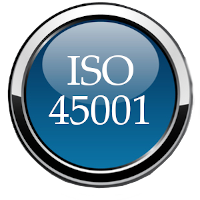 Our workshops are hands on learning events that focus on your processes and designs. These onsite or virtual sessions can be focused on training newer staff or staff transitioning from the 4th edition AIAG FMEA methods. All of our training staff have worked with the previous 4th edition AIAG FMEA Manual and understand the challenges of the new FMEA approach, and the resources and knowledge required. We have 2 specific training options for organizations
Our workshops are hands on learning events that focus on your processes and designs. These onsite or virtual sessions can be focused on training newer staff or staff transitioning from the 4th edition AIAG FMEA methods. All of our training staff have worked with the previous 4th edition AIAG FMEA Manual and understand the challenges of the new FMEA approach, and the resources and knowledge required. We have 2 specific training options for organizationsFor Practitioners:
These classes will help organizations and staff understand the new format of the FMEA forms and how to utilize the new format to implement the 7 Step Process along with the 5T’s needed to effectively create FMEA’s that will:
- Provide prioritized actions to reduce for potential risk
- Provide opportunities for preventive actions and continual improvement
- Effectively document cause & effects of failures
- Document preventive and detection risk
- Increase the usefulness of the resulting FMEA’s for continual improvement
- Ensure that your staff are creating the new FMEA's inthe most efficient way possible
For Auditors:
This training is specifically for auditors (3rd Party and Internal) with a focus on an overview of the FMEA process, the new FMEA requirements (Design and Process), and how to audit this as part of the management system and process audit.

 If your organization is like most these days, you are having trouble finding enough staff to complete your work in an effective and efficient manner. One significant task that you can find highly competent staff to assist you with is your internal audits. Whether you are operating a quality, environmental or safety management system we have the ability to support you in an efficient manner. Once complete you will:
If your organization is like most these days, you are having trouble finding enough staff to complete your work in an effective and efficient manner. One significant task that you can find highly competent staff to assist you with is your internal audits. Whether you are operating a quality, environmental or safety management system we have the ability to support you in an efficient manner. Once complete you will:
 The events of this past year have created challenges for many organizations working to complete internal audits and maintain their management systems. With the large number of organizations that we work with, we have encountered some specific issues that affect most of them and some specific solutions to these challenges.
The events of this past year have created challenges for many organizations working to complete internal audits and maintain their management systems. With the large number of organizations that we work with, we have encountered some specific issues that affect most of them and some specific solutions to these challenges. The EPA has released the Hazardous Generator Improvement Rule, Federally Implemented starting May 30, 2017, and adopted by states thereafter (Typically July 1, 2018 or July 1, 2019 or later) and Michigan as of August 1, 2020. Note that this does not only apply to organization that are ISO 14001 Certified, but any organization with any wastes. The EPA estimates, based on regular inspections, that up-to 30% of all organizations are noncompliant with these rules. One of the goals of this revision was to make the rules more understandable.
The EPA has released the Hazardous Generator Improvement Rule, Federally Implemented starting May 30, 2017, and adopted by states thereafter (Typically July 1, 2018 or July 1, 2019 or later) and Michigan as of August 1, 2020. Note that this does not only apply to organization that are ISO 14001 Certified, but any organization with any wastes. The EPA estimates, based on regular inspections, that up-to 30% of all organizations are noncompliant with these rules. One of the goals of this revision was to make the rules more understandable. 2020 Challenges: What should I be focusing on with my Management Systems (Quality, Environmental, Safety, Laboratory, Information Security…)
2020 Challenges: What should I be focusing on with my Management Systems (Quality, Environmental, Safety, Laboratory, Information Security…) (IATF 16949 Surveillance audit, transition audit, upgrade audit)
(IATF 16949 Surveillance audit, transition audit, upgrade audit) Here is some very good advice on migrating to the new 16949 standard.
Here is some very good advice on migrating to the new 16949 standard.